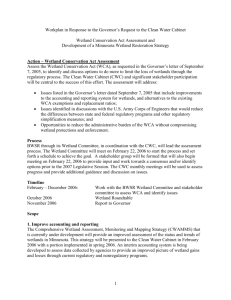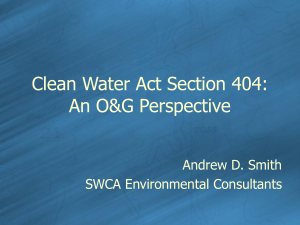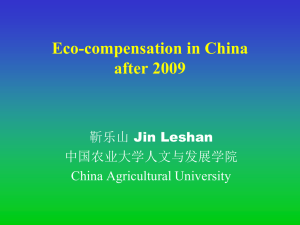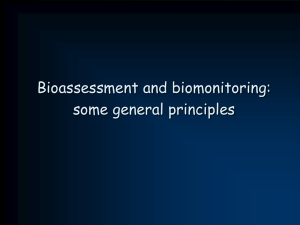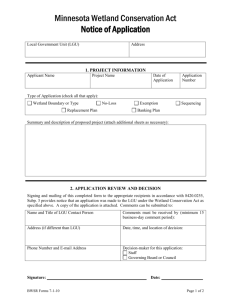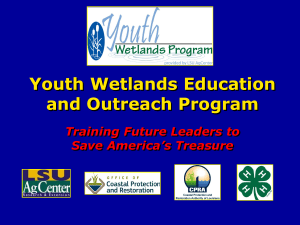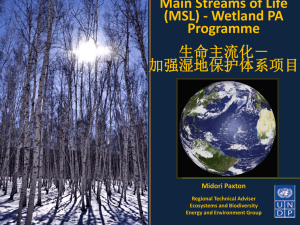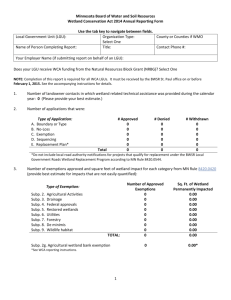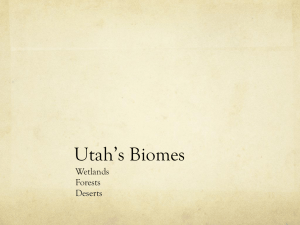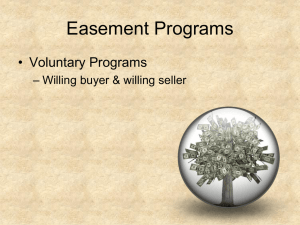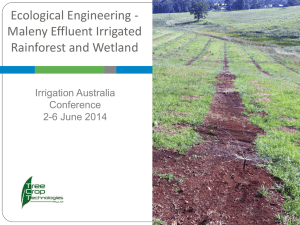MN Stat.103G.2242, Subd. 1 - Wetland Delineator Certification
advertisement
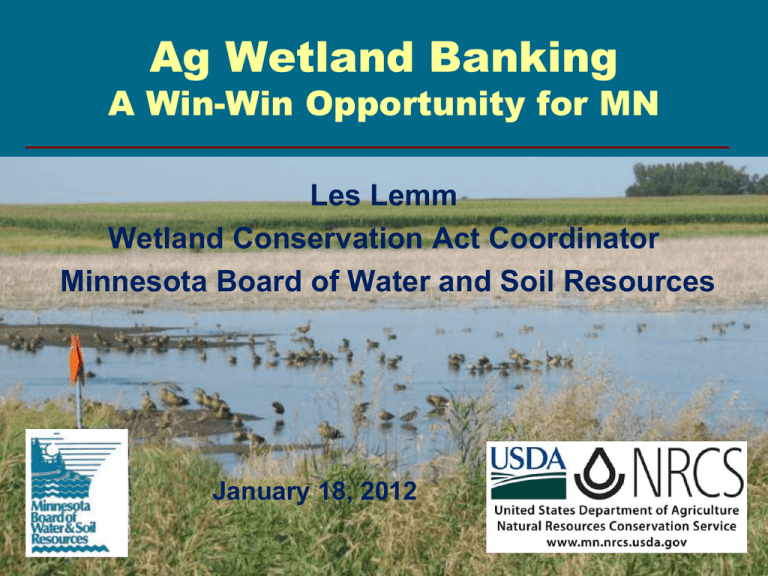
Ag Wetland Banking A Win-Win Opportunity for MN Les Lemm Wetland Conservation Act Coordinator Minnesota Board of Water and Soil Resources January 18, 2012 1 Regulation of Wetlands on Ag Land in Minnesota USDA Farm Bill wetland compliance requirements since December 1985. State Wetland Conservation Act (WCA) passed in 1991. Applies to all wetlands in MN Includes exemptions (several relevant to ag) 2 Current Situation Swampbuster national policy: certified wetland determination for all new drainage projects. Increased interest in tiling = increased demand for wetland replacement. WCA funding inadequate for comprehensive review of ag projects. 3 BWSR and NRCS Similar Goals Similar Program Responsibilities Same Clientele Opportunity for Partnerships 4 BWSR-NRCS MOU 12-23-09 1) Communication, Information Sharing, and Coordination 2) Delineation of Wetland Boundaries 3) Wetland Violations 4) Wetland Mitigation 5 BWSR-NRCS MOU Wetland Mitigation Specifics a) Banking according to WCA standards provides acceptable mitigation for WCA and Swampbuster. b) Goal: BWSR conservation easement and monitoring sufficient for NRCS. c) Conduct joint review of replacement requirements; ID mutually acceptable standards. 6 BWSR-NRCS 9-21-11 Contribution Agreement Agricultural Wetland Mitigation: “BWSR, as the administrator of the State Wetland Bank in Minnesota, will assist NRCS to increase the opportunities available for mitigation of agricultural wetland impacts through banking or other means.” 7 BWSR-NRCS Contribution Agreement Mitigation Specifics Develop MOU for jointly acceptable wetland replacement standards and the operation of a single-use wetland bank for agricultural wetland mitigation for WCA and Swampbuster. Set up the ag banking system, including necessary revisions to forms, procedures, and requirements for to support interagency use. Provide training and outreach. 8 Wetland Banking in MN State wetland banking system authorized in 1993 by MN Stat. 103G.2242. BWSR is responsible for the operation and management of the bank. Landowners/organizations can determine the users of their credits, and BWSR can establish dedicated or single-use accounts. 9 Relevant WCA Statutes MN Stat.103G.2242, Subd. 1 The WCA rules “may include provisions allowing monetary payment to the wetland banking program for alteration of wetlands on agricultural land…” 10 Relevant WCA Statutes 103G.222, Subd. 1(c): “If a wetland is located in a cultivated field, then replacement must be accomplished through restoration only without regard to [sequencing]…” 2006 2011 11 Relevant WCA Statutes 103G.222, Subdivision 1(a): “Wetlands must not be drained or filled, wholly or partially, unless replaced by restoring or creating wetland areas of at least equal public value…” 12 Relevant WCA Statutes 103B.3355: (a) “The public values of wetlands must be determined based upon the functions of wetlands…” (c) “[BWSR approved methodologies and criteria] must be used to determine the functions and resulting public values of wetlands in the state.” 13 Summary of Current Status Statutory authority currently exists to establish an agricultural bank. Current statute provides flexibility for impacts and replacement of degraded agricultural wetlands. Agricultural interests want to establish an adequate supply of reasonably priced credits for ag projects that can work for both WCA and Swampbuster. 14 The Agricultural Wetland Bank Restored wetlands in ag landscapes only. Impacts limited to farmed, degraded wetlands (FWs). Current WCA replacement standards. Expected high interest in restored wetlands under expiring CRP contracts. Current replacement wetland engineering and construction standards. 15 Benefits of the Ag Bank Better interagency coordination and efficiency – works for both WCA and Swampbuster. Replacement for WCA-exempt ag wetlands. Adequate credit supply and regulatory flexibility for eligible users. Better targeting of sites. Expanded market for ag bankers. 16 What’s Next? More meetings with ag groups. General guidance/fact sheets on ag banking. Guidance on using MNRAM to evaluate wetlands restored under CRP for ag banking. Training for LGUs, SWCDs, and NRCS staff. Additional guidance, updates to forms, banking software upgrade, etc. 17 Result: Win-Win for Agriculture and our Natural Resources 18 For More Information Contact your BWSR Sr. Wetland Specialist See the BWSR website: www.bwsr.state.mn.us 19
